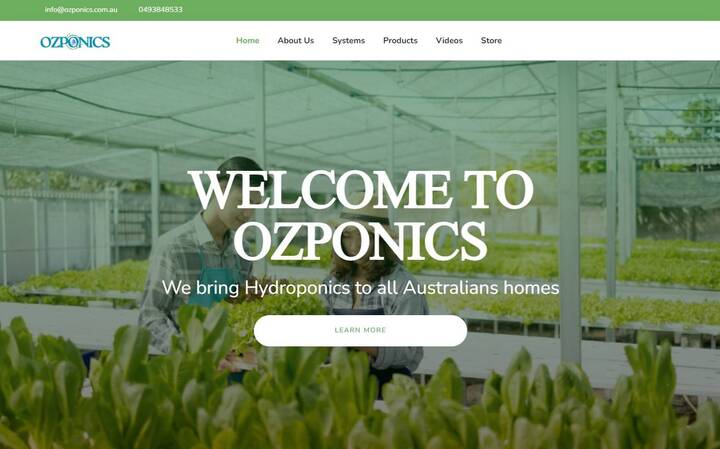MyWorldGo
Setting Up a Hydroponic System: Tips for Australian Home Gardeners
Blog Information
- Posted By : Jacab Hobes
- Posted On : Jul 13, 2024
- Views : 252
- Category : General
- Description : Discover what is hydroponics with our comprehensive guide. Revolutionize your gardening with this in-depth exploration. Start your journey!
Overview

hydroponics australia gardening is gaining popularity among Australian home gardeners seeking efficient, space-saving, and sustainable ways to grow fresh produce. This article provides practical tips and guidelines for setting up a hydroponic system at home, tailored to the unique conditions and preferences of Australian climates and gardening environments.
Why Choose Hydroponics for Home Gardening?
Hydroponic gardening offers several advantages for home gardeners in Australia:
- Space Efficiency: Ideal for urban dwellers or homes with limited outdoor space, hydroponic systems can be set up indoors, on balconies, or in small backyard areas.
- Water Conservation: With Australia's water scarcity concerns, hydroponics uses up to 90% less water compared to traditional soil gardening by recirculating nutrient solutions.
- Year-Round Production: Controlled environments allow for continuous growing seasons, providing fresh herbs, vegetables, and fruits regardless of weather conditions.
- Reduced Pest and Disease Pressure: Soil-free systems minimize pest infestations and soil-borne diseases, promoting healthier plant growth.
Getting Started: Setting Up Your Hydroponic System
-
Choose the Right System:
- Drip Systems: Suitable for beginners, delivering nutrient solutions to plant roots via tubing and emitters.
- Deep Water Culture (DWC): Simple setup where plant roots are submerged in nutrient-rich water.
- Nutrient Film Technique (NFT): Recirculating system where a thin film of nutrient solution flows over plant roots, ideal for leafy greens and herbs.
-
Selecting Growing Medium:
- Rockwool: Excellent for seed germination and providing support to plant roots.
- Coco Coir: Natural and sustainable, retains moisture well while promoting aeration.
- Perlite/Vermiculite: Lightweight mediums for improving drainage and root health.
-
Nutrient Solution and pH Management:
- Hydroponic Nutrients: Choose a balanced nutrient solution formulated for hydroponic systems, adjusting concentrations based on plant growth stages.
- pH Testing and Adjustment: Regularly monitor and adjust pH levels (typically between 5.5-6.5) to ensure optimal nutrient absorption and plant health.
-
Lighting Requirements:
- LED Grow Lights: Energy-efficient and customizable, providing appropriate light spectrums (blue for vegetative growth, red for flowering) for plant growth indoors or in low-light conditions.
- Natural Sunlight: Position outdoor systems where plants receive adequate sunlight or supplement with artificial lighting as needed.
-
Climate Control:
- Temperature and Humidity: Maintain stable environmental conditions (18-24°C temperature range, 50-70% humidity) to optimize plant growth and minimize stress.
- Temperature and Humidity: Maintain stable environmental conditions (18-24°C temperature range, 50-70% humidity) to optimize plant growth and minimize stress.
-
Assembly and Installation:
- Follow manufacturer instructions for assembling hydroponic systems, ensuring proper placement of reservoirs, grow trays, and lighting fixtures.
- Securely anchor systems to prevent accidents or spills, especially in indoor settings.
Maintenance and Care Tips
-
Monitoring Plant Health:
- Inspect plants regularly for signs of nutrient deficiencies, pests, or diseases.
- Prune plants as needed to promote airflow and prevent overcrowding.
-
Nutrient Solution Management:
- Replace nutrient solutions every 1-2 weeks, adjusting concentrations based on plant growth and environmental conditions.
- Clean reservoirs and irrigation components to prevent algae growth and maintain system hygiene.
-
Harvesting and Rotation:
- Harvest mature crops promptly to encourage continuous growth and prevent nutrient depletion.
- Rotate crops periodically to prevent nutrient imbalance and optimize space utilization.
Benefits of Home Hydroponic Gardening
- Fresh Produce: Enjoy a steady supply of fresh herbs, leafy greens, tomatoes, and more year-round.
- Educational Opportunity: Engage children and family members in learning about sustainable agriculture and plant biology.
- Environmental Sustainability: Reduce carbon footprint and promote sustainable food production practices.
